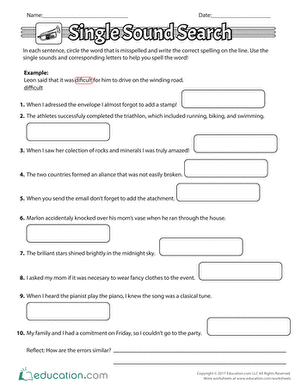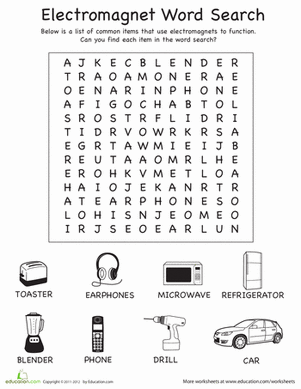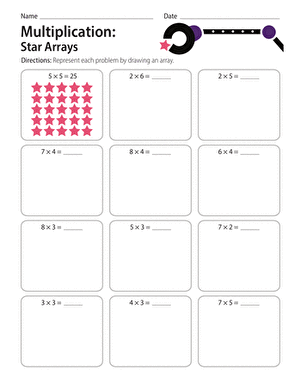Science project
A Single Movable Pulley and Mechanical Advantage
A pulley is a mechanical device that can be used to lift heavily objects more easily. Pulleys consist of a wheel that rotates on an axle—which is a rod through the center of the wheel—and a rope, cable, or chain. There are three main types of pulleys: fixed, movable, and compound.
A fixed pulley’s wheel and axle stay in one place. A good example of a fixed pulley is a flag pole: When you pull down on the rope, the direction of force is redirected by the pulley, and you raise the flag.
A movable pulley is a pulley that is free to move up and down, and is attached to a ceiling or other object by two lengths of the same rope. Examples of movable pulleys include construction cranes, modern elevators, and some types of weight lifting machines at the gym.
The third type of pulley is the compound pulley, which consists of combinations of fixed and movable pulleys.
Problem
Which pulley setup makes lifting a heavy load easiest?
Materials
- 2 tall surfaces of the same height (tables, countertops, or a countertop and a table)
- 3 2”x4” wood planks, long enough to span the distance between the tall surfaces
- 4 fixed pulleys
- 2 movable pulleys
- Rope that fits the pulleys
- Screws
- Screwdriver or drill
- Toolbox with handle
- Tools, books, and other objects to add weight to the toolbox
- Scale
Procedure
Fixed pulley
- Using the screws and a screwdriver or drill, attach one fixed pulley to the center of a 2x4 plank.
- Feed the rope through the pulley.
- Attach one end of the rope to the toolbox handle.
- Place a few objects in the toolbox until it feels heavy. Weigh the toolbox on the scale. Record its weight.
- Set the wooden plank between your two tall surfaces so the pulley is facing down.

- Pull down on the free end of the rope and lift the toolbox. Record your observations. How much can you lift with the assistance of the fixed pulley?
Movable Pulley
- Using the screws and your screwdriver or drill, attach one fixed pulley to a point slightly off-center on one of your 2”x4” plank.
- Feed the rope through the pulley.
- Feed one end of the rope through a moveable pulley.
- Attach the end of the rope fed though the movable pulled to the 2x4 plank, about 1 foot away from the fixed pulley.
- Set the wooden plank between two high surfaces so the pulleys are facing down. The movable pulley will hang down like this.

- Attach the handle of the toolbox to the movable pulley.
- Place different objects in the toolbox until it is heavy. Weigh the toolbox on the scale.
- Pull down on the free end of the rope and lift the toolbox. Record your observations. How much can you lift with the assistance of the movable pulley?
Compound Pulley
- Using the screws and your screwdriver or drill, attach two fixed pulleys about a foot apart from each other on a 2”x4” plank.
- Feed the rope through a movable pulley.
- Feed each side of the rope through the fixed pulleys so the movable pulley hangs between the fixed pulleys.
- Set the wooden plank between two high surfaces so the pulleys are facing down.

- Attach the handle of the toolbox to the movable pulley.
- Place different objects in the toolbox until it is heavy. Weight the toolbox on the scale.
- Pull down on the free ends of the rope and lift the toolbox. Record you observations. How much can you lift with the assistance of the movable pulley?
Results
The fixed pulley will make the toolbox most difficult to lift. The moveable pulley will make the toolbox easier to lift. The compound pulley system will make the toolbox easiest to lift.
Why?
Movable pulleys give you a mechanical advantage, which is measure of performance for machines. Having a mechanical advantage means the force applied by the system is greater than the force you put in. In a pulley system, this means the pulley can lift the object with a greater amount of force than you apply to the rope. This allows you to lift heavy things more easily.
Here’s the catch—even though the moveable pulley system and the compound pulley system let you lift a heavy object with less force than you’d have to use with a fixed pulley, you still had to move the rope farther. The force exerted on the toolbox may have been increased, but you still had to perform the same amount of work on the rope. What this means is that even if the toolbox felt half as heavy with a moveable pulley, you’d have the pull the rope twice as far to raise it the same distance as a fixed pulley would!
Education.com provides the Science Fair Project Ideas for informational purposes only. Education.com does not make any guarantee or representation regarding the Science Fair Project Ideas and is not responsible or liable for any loss or damage, directly or indirectly, caused by your use of such information. By accessing the Science Fair Project Ideas, you waive and renounce any claims against Education.com that arise thereof. In addition, your access to Education.com's website and Science Fair Project Ideas is covered by Education.com's Privacy Policy and site Terms of Use, which include limitations on Education.com's liability.
Warning is hereby given that not all Project Ideas are appropriate for all individuals or in all circumstances. Implementation of any Science Project Idea should be undertaken only in appropriate settings and with appropriate parental or other supervision. Reading and following the safety precautions of all materials used in a project is the sole responsibility of each individual. For further information, consult your state's handbook of Science Safety.













